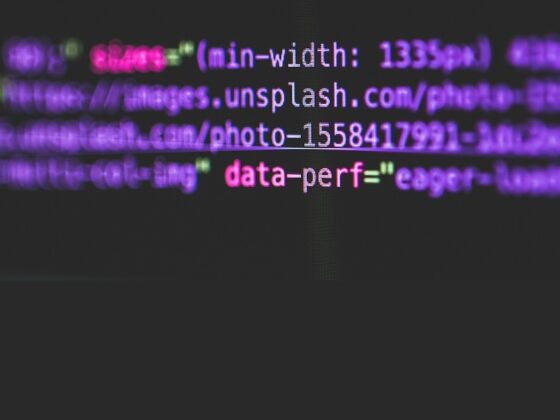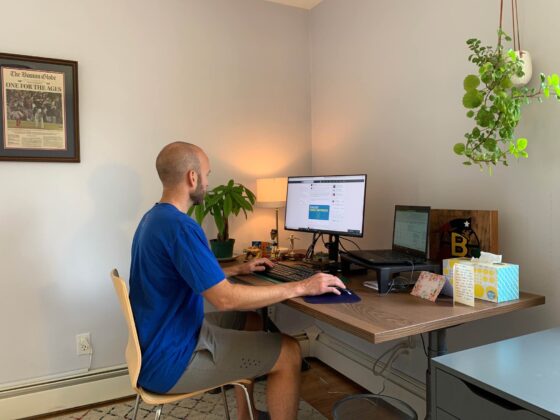CSS, aka Cascading Style Sheets, is a core technology used in web development for building web pages. Given it’s the only style language modern browsers “read” and understand for proper displaying, CSS is a must-know for everyone working with website creation.
In general, CSS is not that challenging to learn, especially for those with some background in tech. With a few days of training, you’ll know the basics to style web texts, page elements, and layouts. But the more you learn and dive into the details, the messier your code may become. That’s why it’s critical to learn CSS the right way from the start.
Best place to learn CSS?
Get matched with an award-wining coding school to start your coding career now:
Here’s what specialists and online users advise on CSS learning:
Do it alongside HTML
The big chances are that you know about the HTML and CSS connection: While Hypertext Markup Language allows you to create a general layout and basic formatting, CSS serves to customize and style it with different fonts, colors, and element positions within a page. So if you want to master CSS quickly, try learning it alongside HTML.
Both run in a browser, so everything you’ll need to do is create an index.html file, link it to CSS, and start practicing. Start with building simple websites and increase complexity gradually. Step by step, you’ll learn how to make buttons, create submission forms, etc. Check other websites’ HTML and CSS codes to see what symbols and tags you’ll need for one or another element, and do your best to copy and remember them for your own projects.
Try online courses for CSS learning
Tons of courses on CSS learning are available on resources like Codeacademy, Coursera, Udemy, and others. You might want to start with free ones to try the fundamentals and understand if it’s something you’d like to continue learning and reach an expert level.
You’ll learn about different stylesheets, get the basics of the CSS box model, and understand properties like display, position, preprocessor, combinator, pseudo-class, and others. A good practice would be to learn all that using live projects or demo pages: It will help you work with many possible causes and their scenarios (how to center align a div, where to use padding, etc.)
Online courses, webinars, and coding bootcamps come with professional instructors explaining the details. So, it can help you learn CSS faster than it would take if you tried gaining everything on your own.
Google it as you go

Practice makes perfect, so another tip for learning CSS quickly would be, “Just google it as you go!” What does it mean?
Even seasoned software developers admit that CSS can be overcomplicated if diving into its maze. You can spend time learning all the fundamentals and trying to remember all the combinators and frameworks, but you’ll still have to refer to advanced tutorials when a particular case appears. So, just start practicing CSS and google when you need to work stuff out.
Get the basics via blogs and video tutorials
As an active Internet user, you know that everything is possible to find online today. The basics of CSS aren’t the exception. So, start your journey to the world of coding from the informative blogs and video tutorials on the subject.
Comprehensive blog articles from professional programmers or coding fans will help you learn the theory: basic styling and syntax, selectors, properties like padding, margin, border, etc. Short video tutorials will help you understand where and how to use them in practice. While watching, try to repeat after a tutor for better assimilation of the knowledge you get.
Some books on CSS from Amazon or short tutorials from universities or coding bootcamps will come in handy, too: You’ll have an opportunity to refer to them each time you need to deal with a CSS element you forget.
Practice, practice, practice!
CSS is all about practice. It’s like learning a foreign language: You may spend hours trying to remember as many new words and grammar rules as possible, but you won’t know it if you don’t write, read, or speak it regularly.
Speaking of CSS, it would help to go for some real project so you could practice all the elements there while learning. Think of creating a hobby website (a book or movie database, an invoicing system, etc.) and shape it to your needs with different frameworks you get during the study.
In a word
We all know that reading blog posts or watching short tutorials on YouTube is not enough to master CSS. The best way to learn something is to build real things with it.
You can start with online courses, books on coding, or video guides to get the fundamentals of HTML and CSS for website building. But if you want to master it and do it quickly, combine theory with practice: Work on real projects while learning, keep on practicing, and find a professional who can become your mentor on the way to success.








